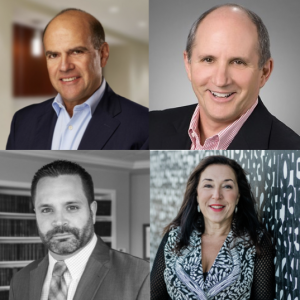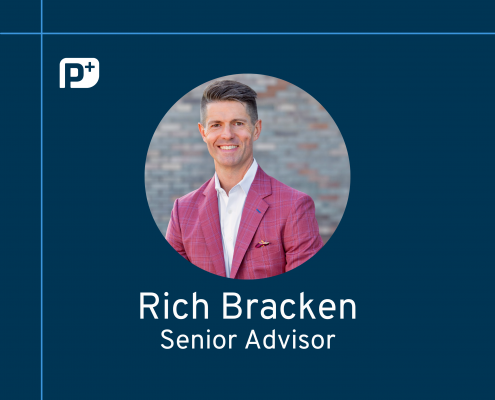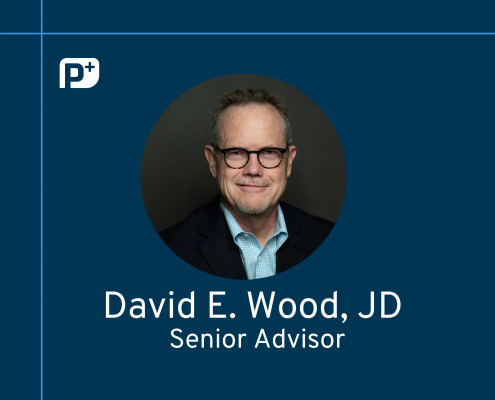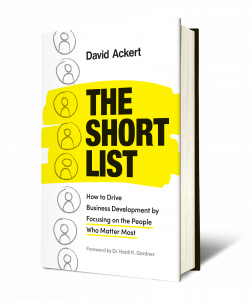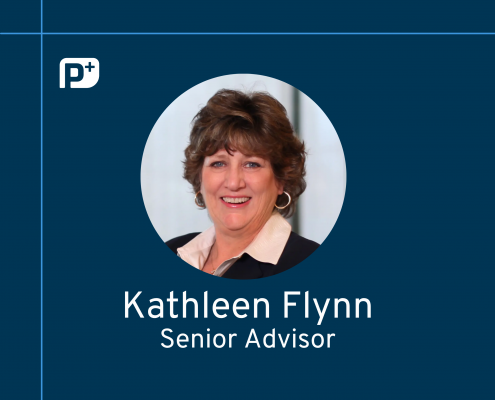 https://pipelineplus.com/wp-content/uploads/2025/07/Kathleen-Flynn-scaled.png
2146
2560
PipelinePlus
https://pipelineplus.com/wp-content/uploads/2025/07/PipelinePlus_Horizontal_Logo_RGB_Full_Color-scaled.png
PipelinePlus2025-07-16 08:22:132025-07-16 08:30:05Coach Spotlight: Kathleen Flynn
https://pipelineplus.com/wp-content/uploads/2025/07/Kathleen-Flynn-scaled.png
2146
2560
PipelinePlus
https://pipelineplus.com/wp-content/uploads/2025/07/PipelinePlus_Horizontal_Logo_RGB_Full_Color-scaled.png
PipelinePlus2025-07-16 08:22:132025-07-16 08:30:05Coach Spotlight: Kathleen FlynnIn times of uncertainty, the value of wisdom can’t be overstated. In this special retrospective episode of the Market Leaders Podcast, we reflect on the valuable insights shared by our recent guests that are particularly relevant for navigating the current market and economic challenges that may lie ahead. Join us as we explore Steve Martini and Larry Braun‘s perspectives on building relationships, Colin Keefe‘s essential guidance on rate structuring, and Eva Wisnik‘s recruitment ideology.
Read Full Transcript
[00:00:00.170] – Intro
You’re listening to the Market Leaders podcast, brought to you by PipelinePlus. Professional service firms use PipelinePlus to capture more business from their most important clients, prospects, and referral sources. PipelinePlus delivers the simplest interface in the marketplace and in-app suggestions on exactly which actions to take to close the next deal. It’s used as a standalone app, in conjunction with business development coaching, or as a CRM companion for more effective sales pipeline management. To learn more, or schedule a demo, visit pipelineplus.com.
[00:00:40.490] – David Ackert (Narrating)
Hello and welcome back to the Market Leaders Podcast. I’m David Ackert, and today’s episode is different from our usual format. Instead of featuring a new guest, we’ve prepared a special retrospective designed to address the concern we’re hearing most often from our clients, which is “how do we navigate in an uncertain economic landscape?” Well, in the current environment, it’s even more important to focus on established relationships, billing confidence, and strategic talent acquisition. So today’s episode features insights that focus on these topics. Our goal, as always, is to equip you, our listeners, with the tools you need to stay ahead of the curve. During uncertain times, your professional network is your lifeline. Those proven relationships that send repeat work and referrals are the constant in an otherwise unpredictable future. In episode 68 of the Market Leaders podcast, Steve Martini, partner at Withum, and Larry Braun, partner at Sheppard Mullin, discuss the importance of cultivating strong referral relationships. In the following clip, we revisit insights from these two rainmakers.
[00:01:41.240] – David Ackert
So we’ve covered a lot of ground here. We talked about the importance of starting with some sort of formal structured group, like the two of you met in Provisor, and if there isn’t one that’s already available to you, seek out organizations where you have some exposure to other people that you can get to know. The social activity, developing synergies with people that you genuinely like, people, as you said, Larry, that you can care about, and over time developing that know, like, trust, referral kind of momentum. You also talked a little bit, Larry, about how you sought out social activity with Steve. Let’s go on a hike, let’s go on a vacation together, let’s do something outside the confines of a business lunch or formal networking just because it’s more fun. And like you said, it’s got to be fun in order for it to be sustainable. Steve, you talked about seeking out mentors, asking for introductions from them. Their expanded network will invariably be a resource that you can tap into, especially at your appropriate demographic. And it sounds like both of you do quite a bit of mentoring within your firms. So there is usually someone at every firm who’s willing to take someone else under their wing and set them on the right path. And then finally, you talked about setting reasonable goals, setting reasonable expectations, and preparing yourself to run the marathon. It’s got to be something that is sustainable. It’s got to be something that isn’t overly ambitious, one foot in front of the other over time will get you down the path. Anything either of you would add as we think about what are the sort of the key takeaways for people that are looking to accomplish some of the things that the two of you have accomplished both in your independent practices but also in your relationship as friend and referral sources?
[00:03:29.950] – Larry Braun
Yeah, I’ll give two, and then Steve, maybe you can chime in. The advice I give people all the time and talk about is it’s all about people. If you love people at all, and you don’t have to have an in depth relationship, where you go vacationing. But I find that if I talk to anybody, I’m going to learn something about something. What they do, where they vacation, what restaurants they like, what their practice is, some interesting case: so it’s all about people and getting to know them, and everybody provides value. And if you can give value back and be equally interesting, then it’s a home run.
[00:04:13.760] – Steve Martini
Yeah, and let me add, and these are both fairly recent real quick stories. My wife and I were out on New Year’s Eve. We’re sitting there, we’re talking to a couple that’s at a table next to us. We just started a conversation. They were nice people. They were going to Italy this summer, I’m going to Italy, blah, blah, blah. And by the end of it, the guy’s in the entertainment industry, because he was asking me, snuck in a tax question when I told him what I did. By the end of the night, he asked for my business card. And so all it was, was just sitting there, being open, having a great time and being conversive and stuff. And then as Larry said, it’s just knowing people and getting engaged with them. And a quick funny story is, a few years ago, me knowing a lot of people sometimes, my wife, it’s to her chagrin, so we’re in Paris, just her and I, our 25 year wedding anniversary in this beautiful hotel, walking through the lobby, and from behind, somebody yelled “Hey, Steve!” And the look on my wife Allison’s face was classic, like, “can we not go anywhere?” I said, Honey, this is how we’re affording the trip to Paris! So it’s these kinds of relationships, you just build them and before you know it, before I look back, and also, as Larry said, a lot of them are just dear, dear friends. I remember my son’s bar mitzvah. I had two tables of friends who also I do a lot of business with, but they’re dear friends and you develop those kind of in depth relationships. That’s where I believe business comes from.
[00:05:58.450] – David Ackert (Narrating)
As wallets tighten, it’s not only important for advisors to build strong relationships, but also to implement effective pricing strategies that maximize client value. In this clip from Market Leaders podcast, Episode 69, Colin Keefe, partner and M&A Chair at Fitzpatrick Lentz and Bubba, talks about the importance of designing a fair and thoughtful rate structure. Check out Colin’s philosophy on pricing, and his approach to rate adjustments that accommodate clients of all sizes.
[00:06:25.610] – David Ackert
So when you talk about this range of clientele, it begs the question how do you position your services so that they’re appropriate both for the mom and pop, who are probably going to be a little more price sensitive, and the Fortune 500 companies, the middle market, right? Some of these have budgets, legal budgets. Others are very price conscious and they haven’t even anticipated in many cases needing legal work. So how do you approach all of that? How do you think about that in a way that enables you to be sort of all things to all people?
[00:06:56.900] – Colin Keefe
It’s interesting and it’s been tough. I will say that as I mentioned before, our position and identity in the Lehigh Valley is important to us. The Lehigh Valley is important to us, and we never want to lose our connection to the Lehigh Valley. Now, I will also say that many of our clients are outside of the Lehigh Valley. We no longer think of ourselves as a local firm or even necessarily a regional firm. I’m doing a deal with a UK buyer of a Boston company right now that doesn’t have the slightest thing to do with the Lehigh Valley whatsoever. It’s just a middle market transaction and we’ve become active in middle market M&A and that’s a great thing. But at the same time, we don’t want to lose who we are and our identity. I will say the base, the foundation of our structure starts with those local businesses, and we have a graduated rate structure. We have three standard rates with a delta in between those rates. And the bottom of that rate structure is what we feel is an appropriate level for our services and our transactional real estate, etc. services for the local businesses and even individuals. High net worth individuals generally, but not always. You know certainly not in our domestic groups or estates group: if you’re a school teacher and you need a will, come on down, we’re happy to help you. So the bottom of our rate structure is priced appropriately for those businesses. Then we have a middle market rate above that, and then above that we have a large transactional rate. I will say that those two higher rates fall more progressively behind what would be appropriate for the sophistication of our services and what our competitors are charging for services that are commensurate to ours. We are undercharging our large clients. Having said that, we feel that it is appropriate to do that to maintain our position as a firm with our roots here in the Valley, and to provide high value services to our clients. We’re still charging a little more for the highly sophisticated transactions, but generally we have found we’re charging a lot less than our competitors. But we’re comfortable with that and we don’t want to forget who we are and where we came from.
[00:08:57.150] – David Ackert
Thank you for sharing all that. I’m always fascinated by this topic because a lot of how firms justify their rates tends to come down to a couple of factors, right? One is looking at what other firms are charging, and in some cases it’s, “Well, we’re certainly not charging what the top AM Law white shoe firms are charging. But we’re charging something that ultimately is going to be perceived as a value to the client while still being fair to us.” That’s kind of where we try to land in the middle there, in the sweet spot. But it’s all kind of going on inside the lawyers heads. I mean, there isn’t a real sort of scientific analysis here. It’s not like firms are taking all of the billing rates of all of their competitors and really looking at where they sit in the marketplace. “Oh, we’re a little more sophisticated than this other firm, so we’re going to charge a little more than them, and we’re a little less sophisticated than this other firm. Or maybe we don’t have the reputation of that firm by about 30%, so we’ll charge 30% less.” It’s pretty fuzzy in terms of where firms land, and ultimately I think a lot of it just comes down to: lawyers price themselves at the intersection of fear and greed. “What can we get away with charging,” versus “what’s not too much so that we lose market share, we jeopardize our relationship with our clients,” and I think that this ultimately is true in any industry where you’re charging by the hour or you’re setting a price where it’s completely up to you what that dollar number ultimately is. It’s, “how do we maximize our profit? How do we ensure that we are really getting as much as we deserve,” but also “How do we ensure that we’re not pushing over a line somewhere.” And because there’s no playbook, because again, it’s really subjective at the end of the day, I’m just curious as to how that process works out at your firm and what the thinking is there.
[00:10:44.910] – Colin Keefe
We try to be a little more scientific than that.
[00:10:47.920] – David Ackert
Really, tell me.
[00:10:50.750] – Colin Keefe
Well, in our most recent round of rate increases, which in light of inflation were a little higher than what we have traditionally done in the past. So in the past we’ve sort of had, “you know, we’re going to go up 4% a year on this and that.” It was fairly formulaic, right? We tried, we did, analogize ourselves to a more traditional manufacturing business. An hour of our time is our product, is a widget. The materials that go into that widget are talent and our overhead. The cost of talent especially and overhead goes up, and in order to not compromise on the material inputs, and thus compromise the services we’re providing, we have to charge more. I mean, again, you stick with the analogy to the widget manufacturer. If costs are going up, you can raise prices, increase volume, or lower costs, often by reducing your raw material costs and oftentimes getting worse raw materials. In our case, that would be worse talent. That would end up compromising the level of the services we have to offer. And so that’s sort of how we looked at it. We didn’t want to compromise on the level of service we offer. We decided that while pricing is certainly important, and pricing was very important to some of the more senior attorneys at my firm, pricing was very important…
[00:12:10.570] – David Ackert
Yeah, at every firm…
[00:12:11.300] – Colin Keefe
But it came down to a discussion of “unless we raise rates, we won’t be able to hire or retain,” which is actually just as big an issue as hiring. And then, our people, and the level of services we have to offer would suffer. And we would rather offer excellent services at an appropriate rate, than satisfactory services at a cheap rate.
[00:12:34.190] – David Ackert
That’s a fair answer, and I appreciate that a lot of thought has gone into arriving at that number, and that there are a lot of forces at work here. It’s ultimately an exercise in compromises. I’m curious, what indicators or data points have you looked at from your client base to make sure that your rate isn’t too low? It isn’t too high? Is there any kind of a feedback loop there that helps validate that internal analysis?
[00:12:59.510] – Colin Keefe
Less than you would hope for. Getting that sort of market data is always a struggle. You look at a couple of things. Obviously, we track numbers very closely. We’re looking at new client origination. We’re looking at lost clients. We’re looking at pay rates, delays, our overall collections. I find that to be an excellent indicator. We’re looking at anecdotal client comments and complaints. Our firm is not so large that we can’t get a sort of feel of overall commentary from the client base. And so we’re looking at all that. We just did our most recent increase at the six month mark this year at the beginning of the third quarter. And so these numbers are just starting to come in now, and we’re looking closely at them. We have not seen any negative indicators based on that increase so far, at least we think we haven’t.
[00:13:51.660] – David Ackert
Nothing overt alteast.
[00:13:52.360] – Colin Keefe
Well, the other thing is sorting the signal from the noise, right? Obviously, the third quarter wasn’t as strong as the second quarter, and the fourth quarter will be less strong still. Is that rates? Is that the economy? Is it both? Is it all the economy? We’re working through it.
[00:14:08.190] – David Ackert
Yeah. That’s great. I appreciate your candor. I appreciate that it is a moving target.
[00:14:13.650] – David Ackert (Narrating)
To conclude today’s retrospective, let’s circle back to Episode 70, where I interviewed Eva Wisnik, president of Wisnik Career Enterprises, and an expert in recruitment. In this episode, Eva and I discussed the importance of having a proficient marketing and business development team to help your firm thrive in a competitive landscape. In the following clip, Eva shares her insights on how to recruit the people who can help you achieve your goals.
[00:14:36.800] – Eva Wisnik
So I believe the interview process is really a two pronged approach. You have two goals going on. One is to assess the talent, and the other one is to sell or market to the talent. And I’ve often seen, even when I was in law firms for many years, that sometimes the focus will be one pronged. There’d be even a borderline interrogation that would go on. The difference between an interview and interrogation is the tone and the timing. If I ask you questions looking for ideally positives, but also uncovering other things, versus asking questions to figure out what’s wrong with you, that’s when people get most offended and turned off. I think you can get a lot of information from people if you pre-plan, know what your intention is. Like you said, one thing I have often seen, more often than you could imagine, is that by the time a partner, maybe head of practice, a major decision maker, gets to meet the marketing talent, oftentimes they haven’t read the resume. They also haven’t read the job description. They’re not even sure why they’re hiring this person, right? So I would say anybody who gets in front of a marketing professional at any level, make sure that you actually read the job description so you know why there’s a need to hire this person and that you can address that. The other thing in both cases is really becoming familiar with the candidate’s background. So if you really read the resume before the candidate comes in, there are a couple of things that are going to happen. One is, you won’t start the interview by saying, “so tell me about yourself.” And I think all of us know that’s a code for: I’ve not even looked at your resume. And I’ll talk in a second about why that’s so important, but you will also not get the maximum amount of information out of this person because you are trying to read the resume and interview them at the same time. So I would say the preparation is really key; it’s important to know why you’re interviewing this person. One of the things I have really come to believe, and it underscores every interview training program I do for law firms, is that every interview is a branding opportunity. So what does that mean? That every person that you stand in front of, sit in front of, whether it’s an initial interview, whether it’s a full round of interviews, or a fourth round of interviews: they walk away with an impression of your firm. And even if you decide you don’t want to hire that lateral partner, or that CMO, or that marketing manager, they will walk away and that word of mouth, when somebody says, “hey, what did you think of XYZ?” Or, “What do you know about XYZ firm?” That reputation gets transferred based on their experience with you. So one of the things I really want everybody who’s listening to think about is, when your attorneys, or yourself, if you’re a marketing professional, interview somebody, how you present yourself and the firm and how they leave feeling about that experience, regardless of whether they get an offer, or they accept the offer, that goes a very long way. And the last thing I’m going to say because I feel so strongly about this: I was recently in Miami doing an interview training program for a law firm and I said, have any of the lawyers here ever had a bad interview experience? And the hiring partner raised her hand, and said “1987, it was at the Capitol Grill…” People have this memory that goes so far back. So thinking about reputation, thinking about how people perceive your firm and how they talk about it, that person across the table from you right now might not be somebody you want to hire, but it could be a referral, a future client, or maybe you’ll want them one day as a senior attorney or partner. So just thinking about it as a long term reputation building process. And I think it’s equally important to identify a few behaviorally based questions. Let’s talk about the difference. A traditional interview question might be “Tell me about your weaknesses.” Or, “I see that you have always been a corporate finance lawyer,” so it’s close ended. You already come in pre-thinking something, and you’re looking for confirmation of that, versus “Tell me about how you hope to use that experience when you join a new firm.” It’s open ended, right? And open ended questions will get you information that you might not have anticipated. They are better for establishing and then going deeper. “Oh, tell me about that. Bring me through the process. How did you go about doing that? You don’t have to tell me the name of the client, but how did you build that practice? How many hours a week do you spend marketing?” Because how a candidate behaved in the past is most likely how they’re going to behave when they get to you, right? So instead of saying like, “why are you planning to leave your firm?” Like, “why do you want to leave your firm?” That’s kind of a defensive question. What I would recommend saying is something like, “Having had the experiences you’ve had, what’s the ideal look like if you went to a new firm? What is it that you would want that might be different than what you’ve had before?” I think some people are fantastic interviewers, and when you figure out who is because you see their comments, and you see how they play out, and how they spot talent, and are really spot on in terms of their process, get them really involved with the process and really reward them for that. But just kind of keep track of what’s working and what’s not. And keep tweaking. But, behavioral based questions, making sure people are prepared for interviews, moving the process along and thinking of every interview as a branding opportunity. I think those are some keys to this whole thing.
[00:19:21.170] – David Ackert (Narrating)
In light of the current economic climate, and the uncertainties that come with it, we hope you found this retrospective of the Market Leaders podcast insightful and informative. Our aim, as always, is to provide tips that help you navigate your business challenges. As a follower of our podcast, we value your support and feedback. If you like what you heard today, please leave a review on your listening platform of choice, and check the posted notes for additional links and resources. We look forward to reconnecting with you on the next episode of the Market Leaders podcast.
[00:19:52.490] – Outro
Today’s episode was brought to you by PipelinePlus. We solve business development problems for professionals around the world. Visit pipelineplus.com to learn more about our technology and coaching solutions.

